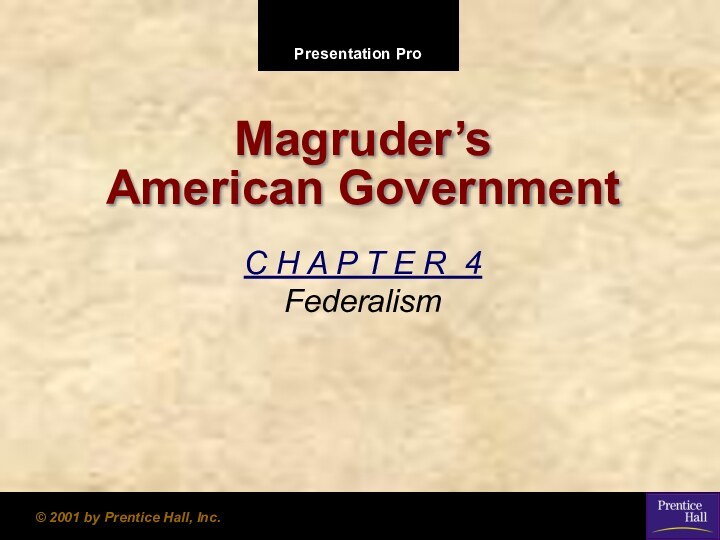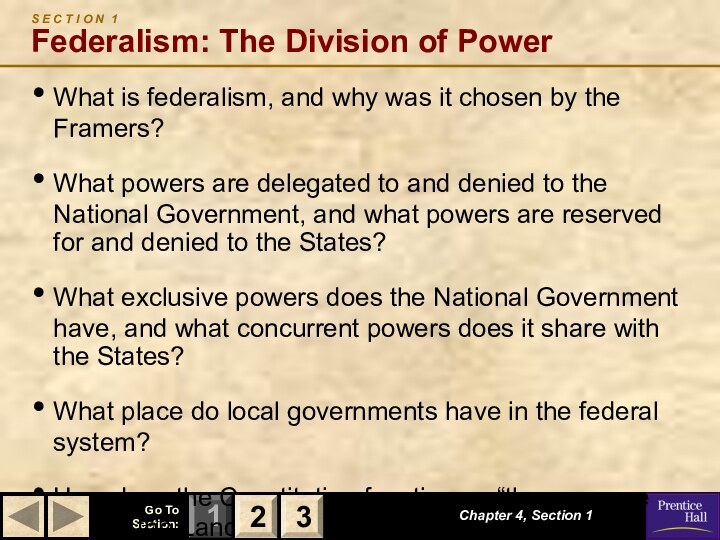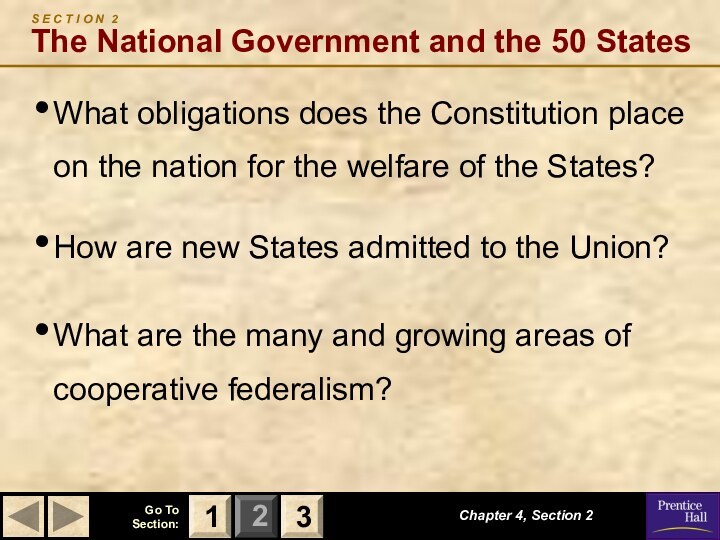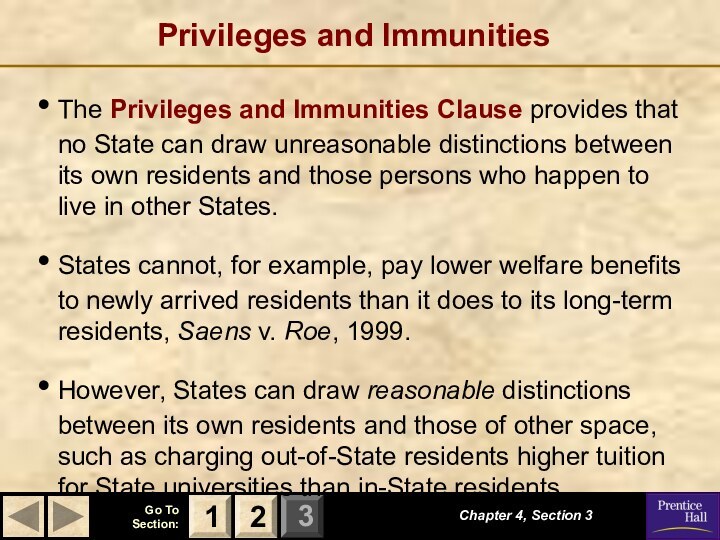1 Federalism: The Division of Power
SECTION 2 The National Government and
the 50 StatesSECTION 3 Interstate Relations
Chapter 4
2
3
1
FindSlide.org - это сайт презентаций, докладов, шаблонов в формате PowerPoint.
Email: Нажмите что бы посмотреть


























Chapter 4
2
3
1
2
3
Chapter 4, Section 1
2
3
Chapter 4, Section 1
2
3
The Constitution provides for a division of powers, assigning certain powers to the National Government and certain powers to the States.
The expressed powers are those found directly within the Constitution.
The implied powers are not expressly stated in the Constitution, but are reasonably suggested, or implied by, the expressed powers.
The inherent powers belong to the National Government because it is the government of a sovereign state within the world community. There are few inherent powers, with an example being the National Government’s ability to regulate immigration.
2
3
Some powers, such as the power to levy duties on exports or prohibit the freedom of religion, speech, press, or assembly, are expressly denied to the National Government in the Constitution.
Also, some powers are denied to the National Government because the Constitution is silent on the issue.
Finally, some powers are denied to the National Government because the federal system does not intend the National Government to carry out those functions.
Chapter 4, Section 1
2
3
Powers Denied to the States
Just as the Constitution denies many powers the National Government, it also denies many powers to the States.
Powers denied to the States are denied in much the same way that powers are denied to the National Government; both expressly and inherently.
Concurrent Powers
The concurrent powers are those powers that both the National Government and the States possess and exercise.
Some of the concurrent powers include the power to levy and collect taxes, to define crimes and set punishments for them, and to claim private property for public use.
Chapter 4, Section 1
2
3
Chapter 4, Section 1
2
3
Chapter 4, Section 1
2
3
Chapter 4, Section 1
2
3
Chapter 4, Section 1
Want to connect to the Magruder’s link for this section? Click Here!
2
3
Chapter 4, Section 2
3
1
Revenue Sharing
Revenue sharing, used between 1972 and 1987, gave an annual share of federal tax revenues to the States and their local governments.
Even though the basis of federalism is the division of powers between levels of government, there is still much cooperation between them.
Project Grants
Project grants are provided to States, localities, and sometimes private agencies that apply for them. They are used for a variety of purposes ranging from medical research to job training and employment programs.
Block Grants
Block grants are portions of money allocated to States to use for broader purposes, such as health care, social services, or welfare. Block grants often are granted with fewer strings attached.
Congress appropriates money for three types of grants-in-aid:
Chapter 4, Section 2
Want to connect to the Magruder’s link for this section? Click Here!
3
1
2
1
More than 200 compacts are now in force, and range in a variety of uses from sharing law-enforcement data to resource development and conservation.
There are two exceptions to the clause though:
(1) One State cannot enforce another State’s criminal laws. And,
(2) Full faith and credit need not be given to certain divorces granted by one State to residents of another State.
Governors are the State executives that handle the extradition process.
If a governor is unwilling to return a fugitive to a State, federal courts can intervene and order that governor to do so.
Chapter 4, Section 3
2
1